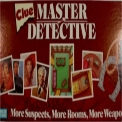Monday, August 9: The Scribbler
FRONT END, BACK END, HIGH LEVEL, LOW LEVEL Part II
by James Lincoln Warren
Yesterday I explained the computer programming concepts spelled out in the title, but to before moving on, allow me to recapitulate. The front end of a computer application is the part that interfaces with the user of the device the application runs on, and the back end is the part that does the necessary computing to perform the function for which the application is intended. A high level computer language is one that resembles English and can be read and understood by a human being, and a low level language comprises mathematical binary strings, or machine language, comprehensible only to a computer.
And I furthermore claimed I could apply these ideas to story telling.
How? Glad you asked, he said, reaching into his toolbox and pulling out his Metaphor Applicator.
I can hear the Gentle Reader purse his lips, which if you think about it, means that the Gentle Reader must somehow be pursing his lips extremely loudly, and see the slight shake of the head indicating disappointment. Too obvious by half—is that all you got?, he may be asking.
Well, no. Although there’s nothing wrong with pulling out a Metaphor Applicator. Not to be too self-referential, but the Metaphor Applicator is, after all, itself a metaphor. It is also a front end tool. Metaphors are rhetorical devices. Rhetoric, you may recall, is the art of persuasion, and by extension, of eloquent expression. It is the means whereby a writer drives home the impression he is trying to make, but it isn’t semantically the same thing as that impression. It’s the the front end of expression, the interface between the reader and the meaning. Consider the following excerpt:
A lot of the streets in Pacific Palisades are as tangled as a can of bait as they climb and switch back on themselves up the hills north of the Pacific Coast Highway.
—“Heat of the Moment” by JLW, EQMM June 2007
In case you don’t know, Pacific Palisades is a rather exclusive neighborhood here in L.A., situated on the coast between Santa Monica and Malibu. The beach is flat until it reaches the Pacific Coast Highway (California State Route 1), where it gives way to steep hills and the Santa Monica Mountains. Houses and apartment complexes are terraced on these hills, and the streets are filled with hairpin curves. The obvious metaphor I used to describe those streets is the can of bait. But I also used another rhetorical device, known as synecdoche (pr. suh-NECK-duh-key), at the same time.
Now a can of bait cannot be actually tangled. How do you tangle a can? Obviously, the stuff that’s all tangled up are the worms inside the can. Synecdoche is defined as “a figure by which a more comprehensive term is used for a less comprehensive or vice versâ; as whole for part or part for whole” (OED). People use it all the time without even thinking about it; for example, when discussing foreign policy, you might say “America” when you’re talking about only the government of the United States, rather than about the whole huge physical place called the U.S. on maps and all the people, buildings, roads, and wildlife it contains.
The beauty of a rhetorical device is that it creates an image much more evocatively than a bald description can. The semantic back end of the narrative is simply the fact that the streets in the Palisades are winding, but the back end called up in the reader is the understanding that the roads are confusing and hard to navigate, like a coiled bolus of worms, and since this is a mystery story, that assists the theme of trying to make plain sense out of a set of convoluted circumstances.
Here’s what a more straightforward description looks like:
A lot of the streets in Pacific Palisades switch back on themselves as they climb up the hills north of the Pacific Coast Highway, and it’s easy to get lost driving on them.
It does the expository job well enough, but it’s dry and factual, not providing any emotional context at all. It’s part of an essay, not a story.
So the front end, the interface, is how the story gets told. There are two back ends on either side of it: the narrative back end, which can be regarded as a summary of story’s plot, and the comprehensive back end, which is what the reader gets out of the story.
Fine. What about high level and low level? Programmers describe low level as being close to the hardware. (One of the reasons I like PCs better than Macs, although I admit that Macs are probably better designed computers, is that it’s easier to do low level tasks on a PC than it is on a Macintosh—you can always open a command line prompt on a PC to see how its several parts are working.) The corresponding hardware in a human being is emotional response.
A good story must have a vicarious effect to work. Otherwise, what you have is a mere account. Love stories have to make the reader feel what it is like to be in love to be worth reading; likewise, the best way to show that a character is scared is to scare the reader while you’re at it.
This is easier to illustrate with a first person narrative than with a third person POV, because in the first person, the narrator is relating direct experiences, although a good writer can do it in any POV.
The climax of “Heat of the Moment” takes place deep in the Grand Canyon. Private eye Carmine Ferrari of Cal Ops has miscalculated the effect of the heat as he tracks the murderers.
I followed them along the thin, winding trail leading down into the baking vertical wilderness, careful to remain just hidden. Once I missed my footing and went down like a blubber boy doing a belly flop in a community swimming pool. Luckily I wasn’t near the precipice, but I waited for several minutes before picking myself up, in case they had heard me, and when I did stand up, I felt a surge of sickening vertigo that nearly sent me down again. I squatted until I felt better, and reached for another bottle of water.
Somehow I’d lost track of how much I’d drunk. The last bottle was only about one third full. I polished it off. What time was it? My watch wouldn’t stay in focus, but I finally realized it was about 2:30 PM.
I had to hurry to pick up their trail. I couldn’t believe the temperature. Engine blocks don’t get that hot.
I was mentally drifting, putting one foot in front of the other, when I nearly knocked Tarkauskas over the edge.
He recovered quicker than I did. He stared at me, his face hard with surprise, and he shouted, “Amber! Trouble!”
I pulled out my gun and leveled it at his chest.
He smirked. “The Sig Sauer, I see.”
“It’s a Beretta, cacasenno1,” I said. It was hard to hold the gun steady. “I told you I was Italian.”
Amber Gerhardt somehow appeared beside him. I switched my aim point to her.
“Look at him,” she said. Her voice irritated me. It was high and nasal. She laughed, a bubbling schoolgirl giggle, and it made me even angrier. My head was buzzing.
“Just let him drop,” she said.
“Amber, we can’t,” Tarkauskas said. “Not twice. We’ll get caught.”
“All we have to do is make sure that this body is never found,” she said. “It was only dumb luck that somebody found the kike.”
I dropped to one knee. It wasn’t on purpose.
If you don’t feel your strength sapping along with Carmine’s, then I didn’t do my job.
The high level part is the verbal description of Carmine’s predicament, which if done effectively, should translate into the Gentle Reader’s low level imagining of what it’s like to succumb to heat exhaustion. The description offers a set of instructions to the reader’s body on what to feel. The reader takes the English of the brain and transforms it into the machine language of the body.
I could go on, but I think I’ve made my point. The only thing left to be said is that if you think I’ve been comparing a human being to a computer, you are only partly right. The truth is that a computer’s design is defined less by its mathematical underpinnings than it is by how human beings use it—it has front and back ends and high and low levels because it was designed to imitate, or at least accommodate, us. Otherwise it’s just a very expensive abacus.
It’s always about the reader, after all.
- cacasenno: scatological Italian slang for “smartass”. —JLW [↩]




















An impressive tour de force, Jim.
So is the reader’s brain the compiler that translates the high-level (English) description of fictional events into the “human machine” language of emotion?
It’s more like an interpreter than a compiler, the difference being that an interpreter, like SmallTalk or BASIC, translates the high level instructions into executable code in real time, whereas a compiler translates the high level language into an executable file, to be run later.
“It’s more like an interpreter than a compiler, the difference being that an interpreter, like SmallTalk or BASIC, translates the high level instructions into executable code in real time, whereas a compiler translates the high level language into an executable file, to be run later.”
Yes, of course! Man, you know your computer stuff.
Got to l-l-love M-m-m-Max Headroom.